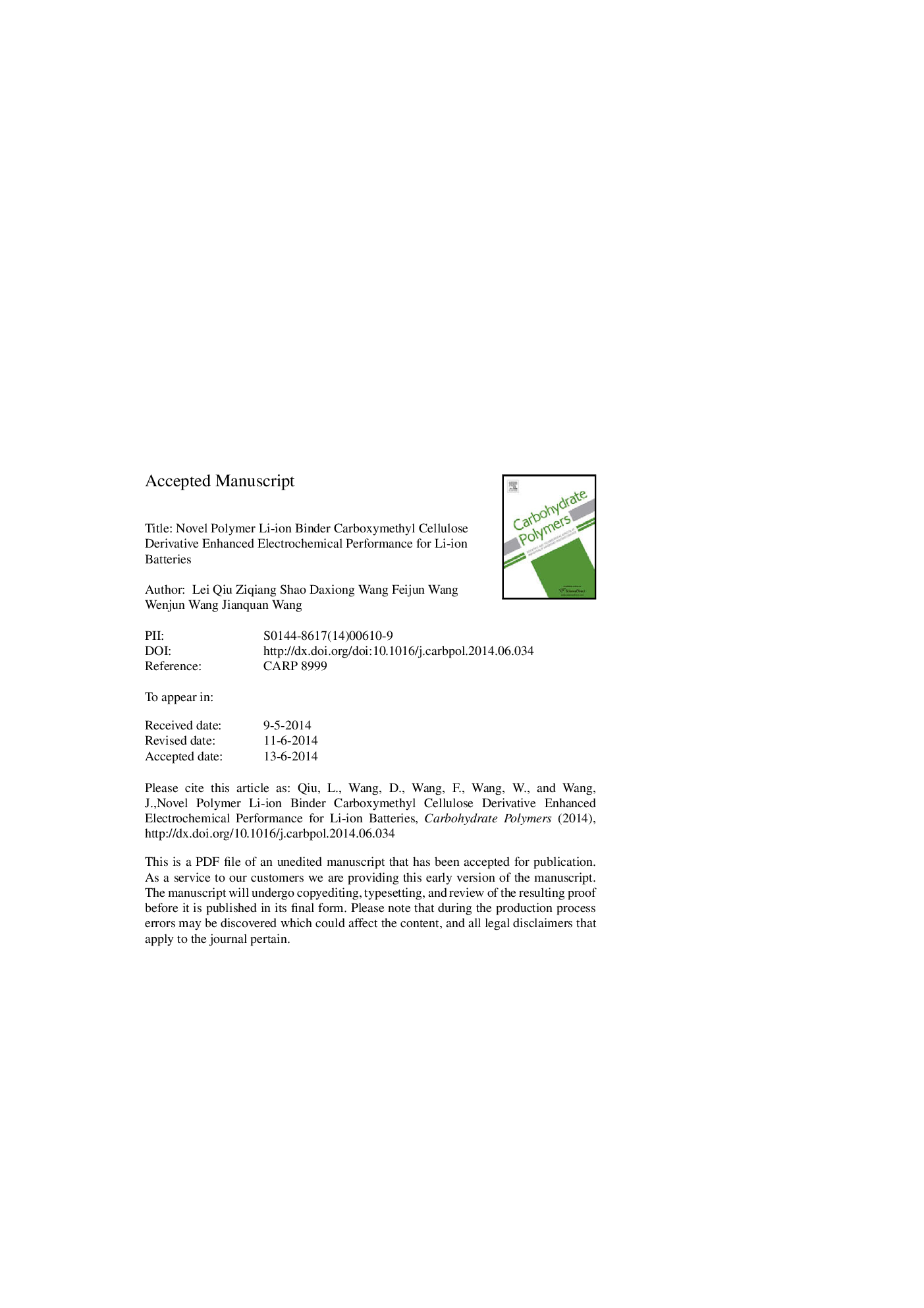| Article ID | Journal | Published Year | Pages | File Type |
|---|---|---|---|---|
| 7791501 | Carbohydrate Polymers | 2014 | 24 Pages |
Abstract
Novel water-based binder lithium carboxymethyl cellulose (CMC-Li) is synthesized by cotton as raw material. The mechanism of the CMC-Li as a binder is reported. Electrochemical properties of batteries' cathodes based on commercially available lithium iron phosphate (LiFePO4, LFP) and water-soluble binder are investigated. Sodium carboxymethyl cellulose (CMC-Na, CMC) and CMC-Li are used as the binder. After 200 cycles, compared with conventional poly(vinylidene fluoride) (PVDF) binder, the CMC-Li binder significantly improves cycling performance of the LFP cathode 96.7% of initial reversible capacity achieved at 175 mA h gâ1. Constant current charge-discharge test results demonstrate that the LFP electrode using CMC-Li as the binder has the highest rate capability, followed closely by those using CMC and PVDF binders, respectively. Electrochemical impedance spectroscopy test results show that the electrode using CMC-Li as the binder has lower charge transfer resistance than the electrodes using CMC and PVDF as the binders.
Related Topics
Physical Sciences and Engineering
Chemistry
Organic Chemistry
Authors
Lei Qiu, Ziqiang Shao, Daxiong Wang, Feijun Wang, Wenjun Wang, Jianquan Wang,
